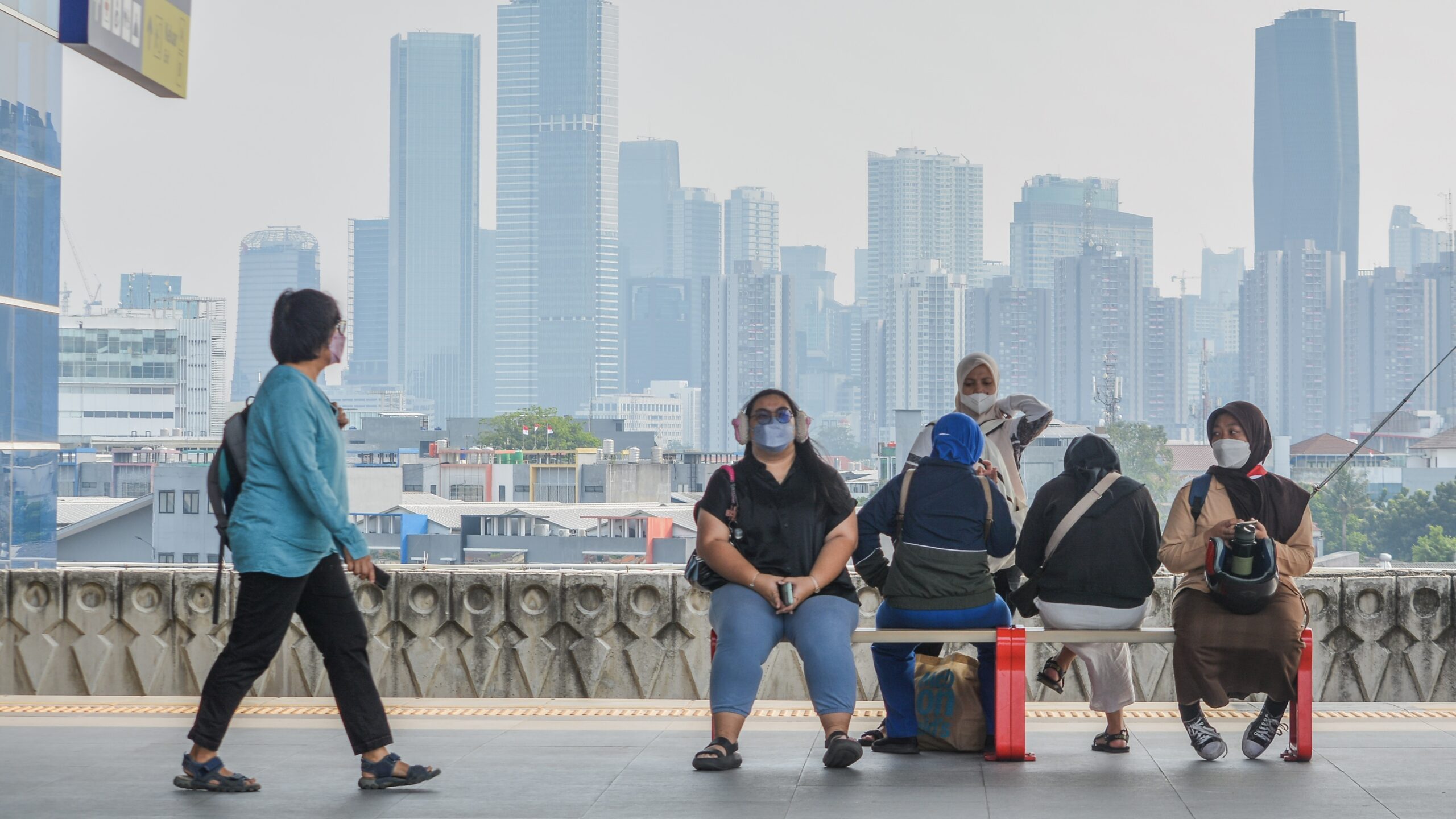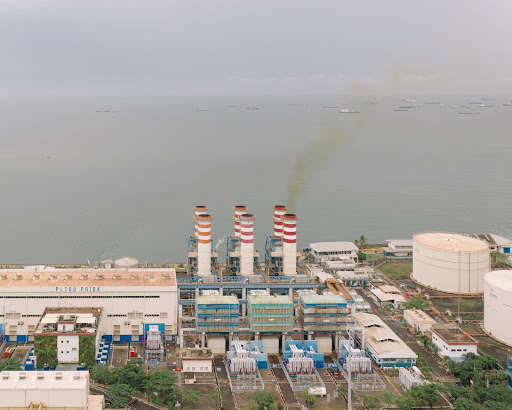
Residents of Jakarta, Indonesia woke up on August 31, 2023, to a thick blanket of haze and news that their city was again ranked the most polluted in the world — one of many times during the last several months when air quality became so poor it threatened citizens’ health. Singapore recently called for citizens to get out their face masks and prepare for smoke from wildfires and agricultural burning in nearby Indonesia and Malaysia. And in Thailand, where the dry season begins in November, air pollution is expected to disrupt air travel and other forms of transportation through April 2024.
Air pollution spikes like these are a regular feature of life in Jakarta, Bangkok and other cities across Southeast Asia. They typically occur annually during dry months, when lack of moisture in the atmosphere and other meteorological conditions combine with pollutants from fossil fuels and other sources to worsen air quality. This year, the El Niño weather pattern is prolonging and intensifying high-pollution events in the region.

Air Pollution Is Already Severe in Southeast Asian Cities
Air pollution creates short-term, acute side effects in the form of cardiovascular and respiratory ailments, headaches and eye irritation. The long-term and chronic effects are even more concerning. Air pollution exposure is associated with oxidative stress and inflammation in human cells. It can lead to chronic diseases such as cancer, cardiovascular disease, respiratory diseases, diabetes, obesity and more.
In Southeast Asia, virtually the entire population (99%) lives in areas where air pollution exceeds the World Health Organization’s (WHO) safe air standards. In fact, 37 out of the 40 most polluted cities in the world are located in Southeast Asia, cutting average life expectancy in the region by 1.5 years and resulting in 352,000 premature deaths in 2017.
Some of the reasons for Southeast Asia’s bad air are natural, while others are human-caused. Here’s a look at why the region experiences some of the worst air pollution in the world — and what cities can do to fix the problem.

1) Weather Conditions Worsen Pollution
Warmer temperatures, lack of rainfall, increased sunshine, and changes in windspeed and direction are all factors that can degrade air quality in tropical monsoon climates. Southeast Asian cities are located near the equator where air pollution intensifies during hotter, drier months. This is because fine particles like PM2.5, PM10 and Black Carbon — associated with vehicle exhaust, coal plants, industrial processes and open waste burning — build up in the surrounding air.
WRI Indonesia’s analysis of air quality monitoring data from 2019-2023 confirms that the monthly average concentration of PM2.5 in Jakarta follows a seasonal pattern: peak pollution in June, July and August (the dry season), followed by a decline during September to April (wet season).
El Niño often extends the dry period into October or November, a pattern observed this year.
While dry months differ by city, pollution worsening during dry seasons is a trend throughout Southeast Asia.
Sunlight and heat also play a role in exacerbating ground-level ozone (O3), a pollutant commonly experienced as haze and which can impact lung and heart function. It is formed through chemical reactions of pollutants emitted by transport, industry and other sources in the presence of sunlight.
2) El Niño Intensifies Weather’s Impact on Air Pollution
Studies show that El Niño can impact the regional climate across Asia, oftentimes creating drier conditions and influencing air quality in the globe’s tropic and sub-tropic regions by varying PM2.5 concentrations. Indonesia’s Meteorological, Climatological, and Geophysical Agency (BMKG) warned that the 2023 dry season will be the most severe since 2019, delaying the onset of the rainy season until November in more than 60% of the country and increasing the risk of failed harvests and fires.
The figure below shows the relationship between rainfall and PM2.5 levels at the Central Jakarta monitoring station in 2019 during the last El Niño cycle, when recorded rainfall reached almost negligible levels. Air pollutants reached highs when precipitation hit lows.
Lack of rainfall due to El Niño also spurred more forest fires, which were a contributing factor to air pollution in Jakarta in 2019 and the main contributor to pollution in other parts of Indonesia. This year, more than 300 forest and peatland fires have been reported on the island of Sumatra alone since August.
3) Transport, Energy and Industry are Major Sources of Air Pollution
Research consistently points toward the same major sources of air pollution inside Southeast Asia’s cities: vehicles, power plants and industrial emissions.
Take Jakarta: The city experiences an influx of 10 million commuters from satellite cities every day, doubling its population and the number of cars traveling on its roads. As of 2018, there were 20 million motorized vehicles in the city, including 13 million motorcycles — numbers that have continued to grow at a rate of nearly 5% per year. The most recent emissions inventory published in 2020 confirms that transport contributed 67% of PM2.5 emissions, 58% of PM10 emissions and 84% of Black Carbon emissions in Jakarta in 2019.
Similarly, 72% of Bangkok’s pollution was attributed to combustion engines in 2022.
The manufacturing and energy sectors are the biggest contributors of sulfur dioxide (SO2) and nitrogen dioxide (NO2) in Jakarta and other cities. These pollutants combine with other emissions and volatile organic compounds to form acid rain, PM2.5 and ground-level O3. Fossil fuel use in shipping and aviation, as well as in the commercial and residential sectors, are additional contributors to PM2.5 and other pollutants.

And it’s not just these local sources that affect a city’s air pollution. Sources of pollution outside cities’ boundaries often diminish air quality within the city itself. Coal-fired power plants and processing plants are a major source of air pollution coming from outside Jakarta’s borders. Crop burning in Myanmar, Laos and other neighboring countries are sometimes the cause of air pollution in Bangkok. Haze from Indonesia’s forest fires affects Malaysia and Singapore, prompting the countries to call for coordinated efforts to tackle “transboundary haze.”
4) Many Cities Lack Pollution Forecasting Tools to Identify Emissions Sources and Provide Public Health Warnings
Like many cities in low- and middle-income countries, cities like Jakarta, Kuala Lumpur and Manila do not have enough air quality monitoring stations to measure pollution in all parts of the city. They also don’t use satellite images and air quality forecasting models to provide warnings to the public in advance of unhealthy air days, the way cities like Bogota, Bangkok or Paris do.
Clean Air Catalyst, a global initiative supported by USAID and WRI Indonesia, partnered with MAPAQ to use the Copernicus Atmosphere Monitoring Service (CAMS) Global Near-Real-Time forecasting system to examine pollution patterns in Jakarta during the first two weeks of August 2023. It showed there was an almost daily build-up of PM2.5 over the metropolitan area and on the eastern side of Java in Surabaya, with pollution concentrations occasionally reaching unhealthy levels. Low wind speeds moving eastward and other dry season conditions likely caused emissions to be trapped near the surface. This indicates that most of the dirty air people breathed in during this time period came from tailpipe exhaust and power generation sources within the city.

If officials in Jakarta and other Southeast Asian cities had regular and consistent access to data like this, they could locate sources, anticipate pollution hotspots, and plan more strategic and effective interventions, such as limiting power generation, testing vehicle emissions, reducing the number of personal and heavy-duty vehicles on the streets, or informing citizens of poor air quality days so they can plan their days and reduce exposure.
Southeast Asian Cities Can Pursue Air Pollution Solutions Now
During high pollution periods, local governments can take emergency steps.
Jakarta recently shut down a factory thought to be a main source of pollution in East Jakarta. In August 2023, city officials instituted a work-from-home order for civil servants to improve air quality. Similarly, in September 2023, several mayors in Manila, Philippines suspended classes and closed government offices on a day with particularly poor air quality. (While authorities first attributed the pollution to a nearby volcano, it was later identified as the product of traffic emissions.) Warning the public to wear masks and stay indoors during high-pollution days — particularly people with respiratory and auto-immune diseases — is also prudent. Health agencies in Bangkok and Jakarta engage medical clinics to treat individuals with pollution-related illnesses, as well as offer education and preventative care.
In the medium-term, officials must prioritize action in the most polluting sectors, including transport, industry, energy and waste. In Indonesia, the government is focused on reducing vehicle exhaust emissions through mandatory emissions testing and random emissions checks. The Manila government is upgrading its fossil fuel emission standards from Euro II to Euro IV to help reduce vehicle emissions since 2016. The government has also started to issue permits online and established self-monitoring systems to track industrial permit operations and emissions compliance.
In the long-term, cities need comprehensive strategies to accelerate the transition to clean and renewable energy and transport — a transition that will also deliver better air, improve human health and slow climate change.
And it’s not just city governments that can take action. Provincial, national and regional action must also scale up — particularly in the case of transboundary air pollution — to tighten and enforce emissions standards on industries and power plants outside city limits, modify agricultural burning practices, and develop rapid response plans for fire seasons. Finally, the public can opt for public transportation, demand better infrastructure for walking and biking, or switch to electric vehicles, to name just a few solutions.
Healthy, clean cities can be built on effective policy, collaboration and community-driven initiatives. Individual choices matter, but coalitions and combined actions — as well as the voice of the city’s population — hold the potential to bring about significant change.
Contributors and Reviewers: Azka Ghaida, Puji Lestari, Beatriz Cardenas, Khalisha Meliana, Idir Bouarar, Dimas Fadhil, Paulista Surjadi
This article originally appeared on WRI’s Insights.
Fadhil Muhammad Firdaus is Research Analyst, Air Quality for WRI Indonesia.
Beth Elliot is Communications & Engagement Lead, Air Quality for WRI Ross Center for Sustainable Cities.
Daniel Ibanez is Digital Communications & Marketing Specialist, Air Quality for WRI Ross Center for Sustainable Cities.





